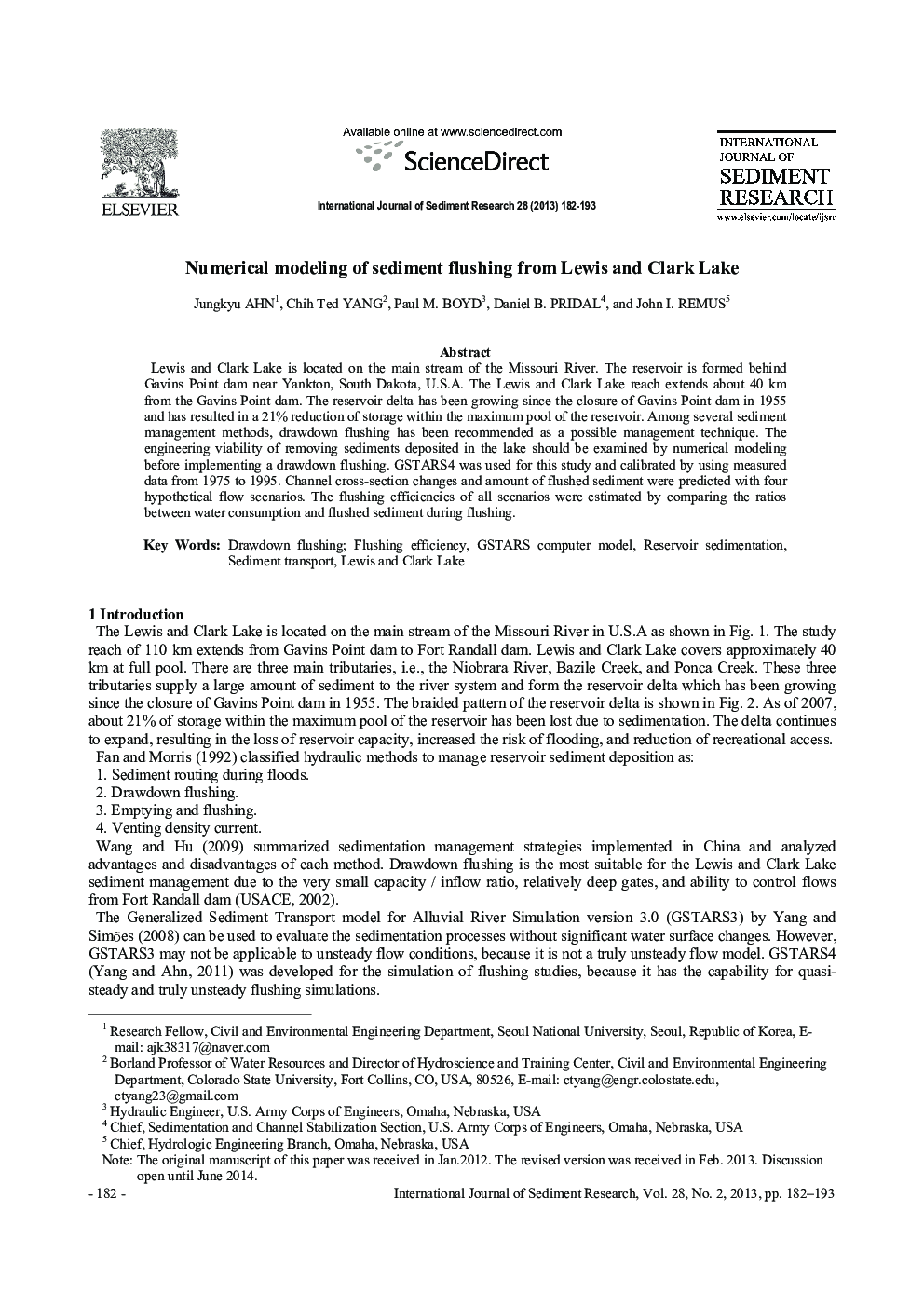| Article ID | Journal | Published Year | Pages | File Type |
|---|---|---|---|---|
| 4712557 | International Journal of Sediment Research | 2013 | 12 Pages |
Lewis and Clark Lake is located on the main stream of the Missouri River. The reservoir is formed behind Gavins Point dam near Yankton, South Dakota, U.S.A. The Lewis and Clark Lake reach extends about 40 km from the Gavins Point dam. The reservoir delta has been growing since the closure of Gavins Point dam in 1955 and has resulted in a 21% reduction of storage within the maximum pool of the reservoir. Among several sediment management methods, drawdown flushing has been recommended as a possible management technique. The engineering viability of removing sediments deposited in the lake should be examined by numerical modeling before implementing a drawdown flushing. GSTARS4 was used for this study and calibrated by using measured data from 1975 to 1995. Channel cross-section changes and amount of flushed sediment were predicted with four hypothetical flow scenarios. The flushing efficiencies of all scenarios were estimated by comparing the ratios between water consumption and flushed sediment during flushing.
